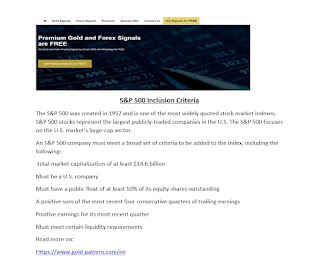Value Investing
Value Investing
Value investors are bargain shoppers. They seek stocks they
believe are undervalued. They look for stocks with prices they believe don’t
fully reflect the intrinsic value of the security. Value investing is
predicated, in part, on the idea that some degree of irrationality exists in
the market. This irrationality, in theory, presents opportunities to get a
stock at a discounted price and make money from it.
It’s not necessary for value investors to comb through
volumes of financial data to find deals. Thousands of value mutual funds give
investors the chance to own a basket of stocks thought to be undervalued. The
Russell 1000 Value Index, for example, is a popular benchmark for value
investors and several mutual funds mimic this index.
Warren Buffet: The Ultimate Value Investor
But if you are a true value investor, you don't need anyone
to convince you need to stay in it for the long run because this strategy is
designed around the idea that one should buy businesses—not stocks. That means
the investor must consider the big picture, not a temporary knockout
performance. People often cite legendary investor Warren Buffet as the epitome
of a value investor. He does his homework—sometimes for years. But when he’s
ready, he goes all in and is committed for the long-term.
Consider Buffett’s words when he made a substantial
investment in the airline industry. He explained that airlines "had a bad
first century." Then he said, "And they got a bad century out of the
way, I hope."2 This thinking exemplifies much of the value investing
approach. Choices are based on decades of trends and with decades of future
performance in mind.
Value Investing Tools
For those who don’t have time to perform exhaustive
research, the price-earnings ratio (P/E) has become the primary tool for
quickly identifying undervalued or cheap stocks. This is a single number that
comes from dividing a stock’s share price by its earnings per share (EPS). A
lower P/E ratio signifies you’re paying less per $1 of current earnings. Value
investors seek companies with a low P/E ratio.
While using the P/E ratio is a good start, some experts warn
this measurement alone is not enough to make the strategy work. Research
published in the Financial Analysts Journal determined that “Quantitative
investment strategies based on such ratios are not good substitutes for
value-investing strategies that use a comprehensive approach in identifying
underpriced securities.” 3 The reason, according to their work, is that
investors are often lured by low P/E ratio stocks based on temporarily inflated
accounting numbers. These low figures are, in many instances, the result of a
falsely high earnings figure (the denominator). When real earnings are reported
(not just forecasted) they’re often lower. This results in a “reversion to the
mean.” The P/E ratio goes up and the value the investor pursued is gone.
What's the Message?
https://www.gold-pattern.com/en
The message here is that value investing can work so long as
the investor is in it for the long-term and is prepared to apply some serious
effort and research to their stock selection. Those willing to put the work in
and stick around stand to gain. One study from Dodge & Cox determined that
value strategies nearly always outperform growth strategies “over horizons of a
decade or more.” The study goes on to explain that value strategies have




Comments
Post a Comment